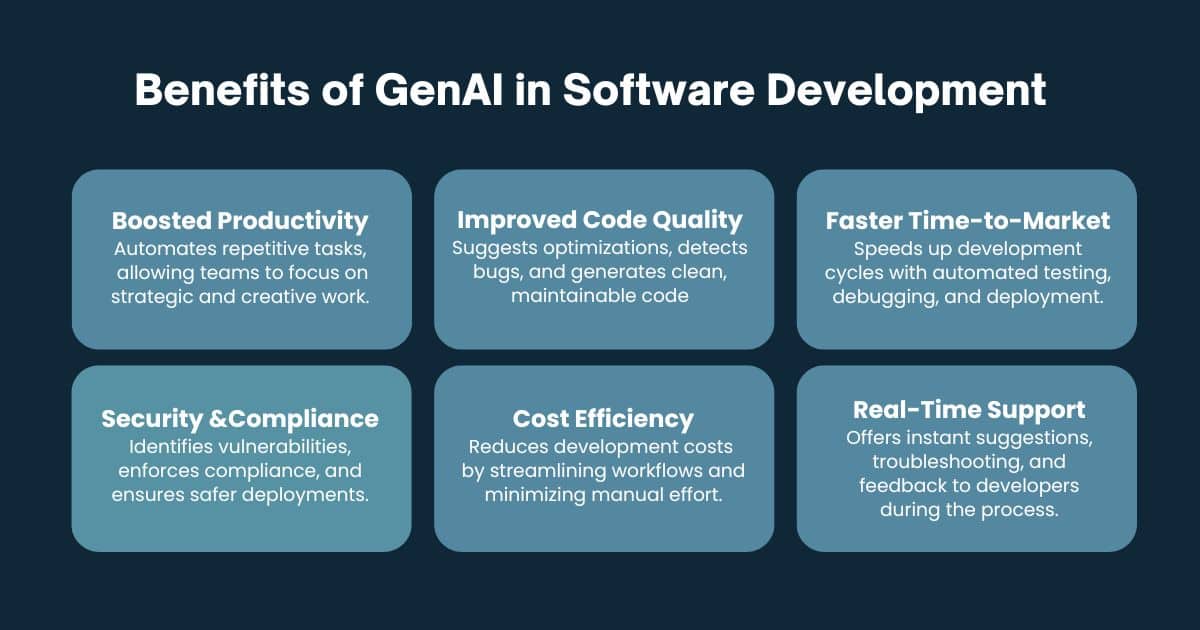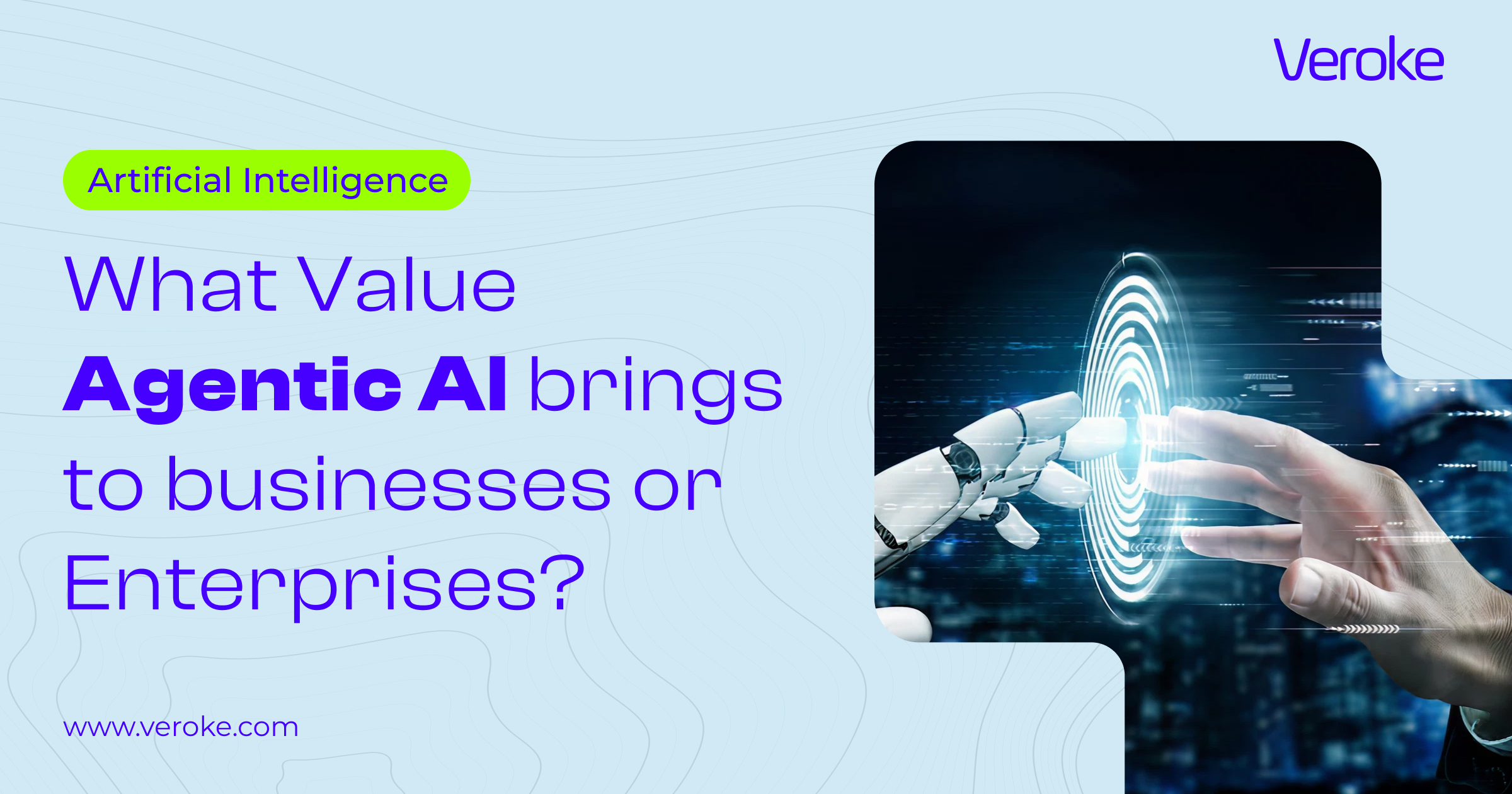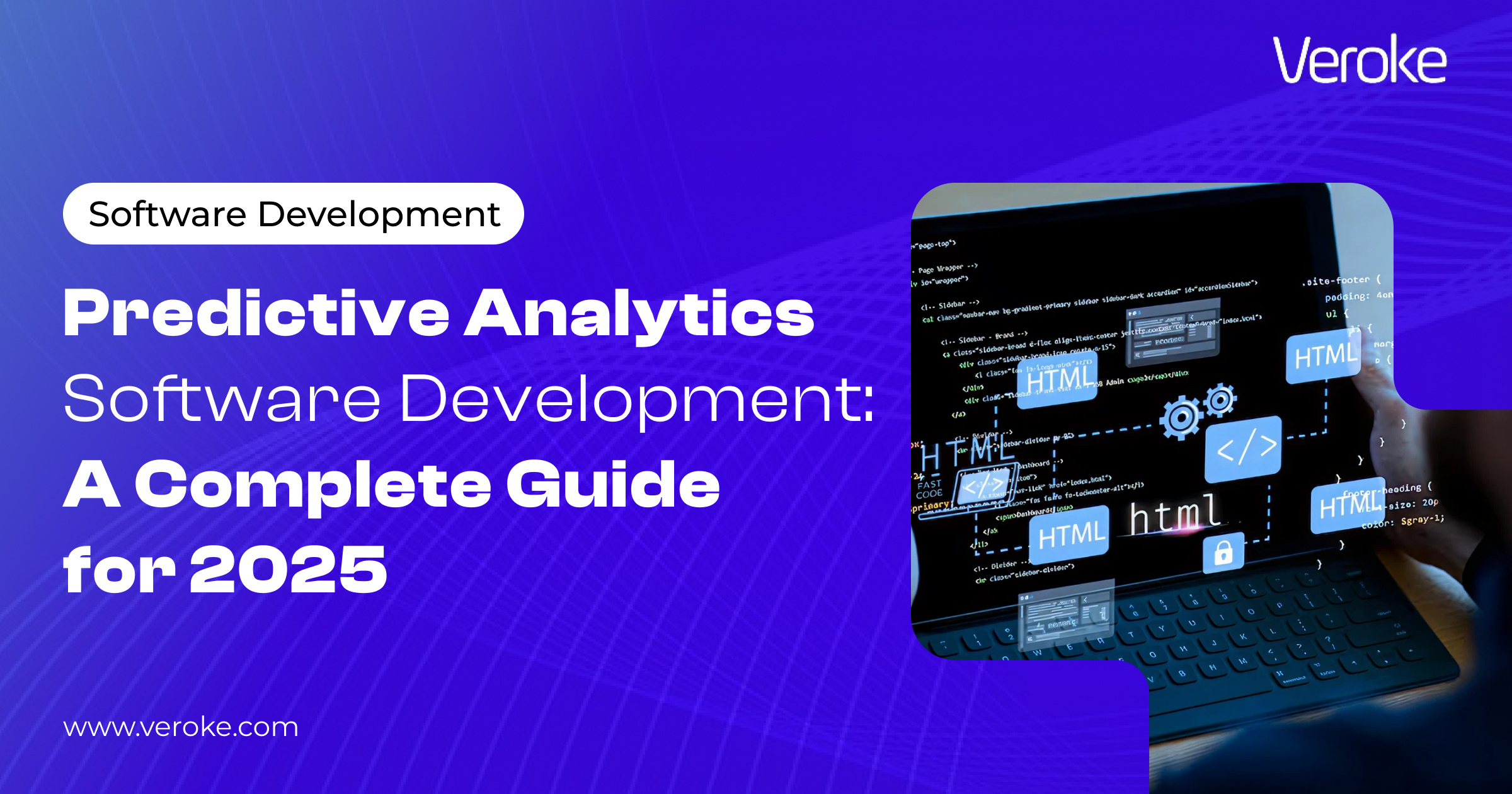Overview
Inside Saudi’s Tech Transformation
Get exclusive weekly insights into how the Kingdom is powering Vision 2030.
TL;DR
- GenAI is revolutionizing software development by automating tasks like coding, debugging, testing, and documentation, helping teams deliver faster with fewer bugs.
- Tools like GitHub Copilot, ChatGPT, and Codex turn natural language prompts into working code, empowering even non-coders to build functional solutions.
- AI-driven testing and code reviews enhance accuracy, detect vulnerabilities early, and ensure compliance across the development lifecycle.
- GenAI refactors legacy code, optimizes performance, and improves maintainability, freeing developers to focus on creativity and problem-solving.
With Veroke’s GenAI-powered solutions, businesses can streamline workflows, scale innovation, and stay ahead in the evolving digital landscape.
Every development team wants faster delivery and fewer bugs. But what if you could make that happen more quickly and efficiently?
This is where GenAI comes in. The future of coding.
Imagine never getting stuck on a coding problem again. Think about AI turning your ideas into working code in seconds. It’s like having a tireless coding partner by your side.
Generative AI, or as it’s often called, GenAI, is transforming the game. It streamlines tedious tasks like code reviews, debugging, and testing while tackling documentation, deployment, and even security.
This isn’t just about saving time. It breaks barriers, boosts productivity, and makes coding feel effortless.
To GenAI, coding is like writing poetry. It follows a structure, rhythm, and flow, just in the software language.
Adopting GenAI in your company isn’t just a trend in software development, it’s a revolutionary shift. Because over 60% of organizations worldwide believe adopting GenAI will significantly increase productivity and efficiency, according to Statista.
But don’t despair, GenAI isn’t here to replace developers. It’s your partner in progress, taking over repetitive tasks so you can dedicate your energy to innovation and creating cutting-edge solutions.
Today, we’ll be discussing how GenAI is reshaping the whole software development landscape. We’ll explore its key use cases, from automating repetitive tasks to enhancing code quality.
So, let’s get into it.
Before we get into the use cases, let’s kick things off with a quick dive into understanding GenAI is and why it is taking the world by storm.
Why is GenAI Gaining Popularity in Software Development?
GenAI is a transformative branch of artificial intelligence that leverages machine learning techniques like semi-supervised and unsupervised learning to generate digital content.
This content can take many forms; text, code, images, audio, videos, and more making it a versatile tool for a wide range of applications.
Its most common use today is generating content in response to natural language prompts.

The best part? You don’t need any coding experience to use it.
Simply provide a prompt, whether it’s text, an image, a design, or audio, and GenAI delivers relevant, high-quality, and innovative results. This ease of use is breaking down barriers, making complex tasks faster, simpler, and more accessible than ever before.
GenAI’s popularity skyrocketed in late 2022 with the launch of ChatGPT by OpenAI. With its human-like conversational abilities, this chatbot showcased just how advanced and useful GenAI had become.
The rapid adoption of GenAI is fueled by its substantial benefits. It enhances customer experiences, accelerates product development, and increases productivity.
Use Cases of GenAI in Software Development
Let’s discuss the most impactful ways GenAI is reshaping the software development industry.
1. Code Generation
GenAI is transforming code generation in software development.
Writing code from scratch takes time, especially for large projects. But with tools like GitHub Copilot and OpenAI’s Codex, developers get code suggestions instantly.
Here’s how it works: you provide high-level requirements in English, and GenAI takes care of the details.
Developers are able to speed up their work by automating repetitive tasks. These tools analyze your project and suggest relevant code snippets.
For instance, when building a web page, the GenAI might recommend HTML or CSS for buttons, forms, or navigation panels. It also reads through your previous code and offers fitting suggestions.
It allows developers to focus on creative, complex tasks. This makes development faster, more efficient, and more enjoyable.
2. Code Review and Debugging
GenAI also help in getting rid of errors and fixing bugs more quickly. There’s a whole industry focused on defect remediation.
Open source and commercial tools scan your code for issues, from security flaws to functional defects. These tools can catch subtle errors, like those that appear under heavy system load or due to memory leaks, multithreaded execution issues, or attempts to access protected memory.
GenAI brings even more value to bug fixing. To begin with, it verifies that the code functions.
Then it can help summarize defect reports from traditional tools. This makes it easier for test teams and developers to spot errors. It can also help you find patterns in faulty code and suggest fixes.
3. Automated Testing
Generative AI is disrupting the way we approach testing. They execute test cases at scale, find defects, and boost test coverage. This speeds up testing and improves your software quality.
Tools like Testim and Applitools are already offering unit tests and A/B testing.
GenAI can play a huge role in testing and test management. It can even help write test automation scripts.
But it doesn’t stop there. GenAI can help test for edge cases. These are rare situations that still need to be properly handled.
Along with that, GenAI can review test cases, even the ones written by humans. It checks if they’re good tests and whether they cover all possible situations, error conditions included. It can even spot potential security risks and hacking attempts during runtime.
With GenAI by your side, testing becomes faster, more thorough, and a lot less stressful. Wouldn’t that make your development process a whole lot smoother?
4. Natural Language to Code Conversion
One of the coolest things about GenAI in software development is how it lets you use plain language to create code. You just give a natural language command or customized prompt, and it handles the rest.
Let’s say you need a login page. And write a prompt: “Create a login page with username and password fields.” In no time, it generates the output for you. There is no need for you to write every line of code.
With tools like ChatGPT, AlphaCode, and GitHub Copilot turning your ideas into working code is easy. Even if coding isn’t your strength, you can still get it done.
It’s like having a personal coding assistant ready to help!
5. Automated Documentation
GenAI can make documentation a breeze for you. Let’s face it, documentation is wearing but essential in software development. It’s the key to ensuring that the code remains understandable, even months or years later.
But we’ve all had that moment of looking at old code and asking, “What in the world was I thinking?” That’s why good documentation is a must.
GenAI is stepping in to automate this process and make it more efficient. It can help you document everything from a project’s architecture to the purpose of specific modules or microservices.
Here’s the cool part: GenAI can even ask you questions while you code. It might prompt you to explain your decisions, and then turn those notes into clear, easy-to-understand documentation.
Using GenAI for documentation lets you focus on higher-value tasks instead of repetitive writing. With GenAI on your side, creating documentation doesn’t have to feel like a chore.
However, a human touch is still essential. You’ll want to check the GenAI’s output for accuracy and add details where needed.
6. Code Refactoring
In your large, long-running projects, technical debt builds up over time. This slows down productivity, especially when you are working with tangled legacy code. Hence, refactoring becomes essential to clean up the mess.
Typically, developers refactor based on intuition. But with GenAI, you can analyze the code more deeply and objectively. These AI tools scan the entire project, measure its complexity, and suggest improvements.
GenAI-driven refactoring tools ensure your code stays maintainable. They offer suggestions in natural language, making the process easier.
The result? Higher quality, optimized code.
GenAI can handle large-scale refactoring, tasks that would be too time-consuming for you to do manually.
This boosts productivity and ensures code remains efficient, no matter how big the project grows.
7. Security and Compliance
GenAI doesn’t just make deployments faster but it makes them more secure. It learns patterns, detects bottlenecks, and raises real-time alerts to prevent attacks.
These GenAI models monitor network traffic and system behavior with precision. They identify unusual activities, such as suspicious logins, data transfers, or unauthorized access requests. By catching threats early, they stop potential breaches before they escalate.
Compliance is another challenge for your tech teams. But GenAI simplifies this by ensuring deployments meet industry standards.
The tools analyze code for compliance issues by flagging missing encryption, insufficient logging, and improper data handling. This helps reduce compliance oversights and prevents costly mistakes.
With GenAI, security and compliance become proactive, not reactive. It’s like having a vigilant security expert on your team, ensuring your systems are safe and up to standard, round the clock.
Sum Up
By utilizing GenAI-driven tools, every stage of software development becomes faster, smarter, and more efficient. From writing code to testing, even fixing bugs, these tools empower teams to deliver high-quality, bug-free software quickly. Developers can shift focus to creative work and solve complex challenges, driving innovation forward.
If your organization is ready to embrace AI in software development or needs expert guidance, Veroke is your trusted partner. Our expert developers use advanced technologies to optimize workflows, enhance automation, and foster innovation.
For businesses focused on staying ahead, Veroke also connects you with a global network of top GenAI developers. Our tailored solutions transform ideas into reality, combining cutting-edge technology with deep industry expertise.
So, book a free consultation with our experts and unlock the power of GenAI for your business success.
FAQs
1. What is GenAI best at?
GenAI creates original, human-like content. Unlike traditional AI, it learns from data patterns instead of following fixed rules. It generates text, images, code, music, and more. Its power lies in automating repetitive tasks effortlessly.
2. How to use GenAI for developers?
GenAI can assist by generating test cases to evaluate the quality of human-written code. It can also create boilerplate code or code snippets that developers can easily customize, enhance, and integrate into larger code modules.
3. Can GenAI improve developer productivity?
GenAI’s impact extends beyond coding. It streamlines processes, enhances accuracy, and boosts productivity across the entire Software Development Lifecycle (SDLC).
Want to know more about our service.
Inside Saudi’s Tech Transformation
Get exclusive weekly insights into how the Kingdom is powering Vision 2030.
Transform your Ideas into a Digital Reality
Get scalable, customized solutions for your business.




